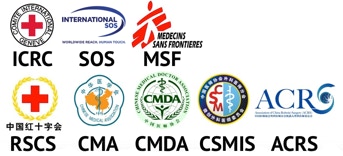

Doctors
Institutions
Conditions
Drugs
Insurances
TCM
Research

Follow Us
What is vulvovaginal atrophy?
Vulvovaginal atrophy describes a condition when a woman experiences a range of symptoms caused by decreased levels of the hormone estrogen, including vaginal dryness, discomfort with sexual activity, and urinary urgency or frequency. These hormone changes cause the vaginal walls and vulva (the “lips” of the vagina) to become thin, pale, dry and/or inflamed. Vulvovaginal atrophy may affect up to half of woman at some point in their lives.
What are the symptoms of vulvovaginal atrophy?
The most common symptoms of vulvovaginal atrophy are:
Dryness, itching and irritation of the vagina and/or vulva
Decreased lubrication with sexual activity
Pain during sexual activity
Bleeding after sexual activity
Urinary urgency or frequency
Burning with urination
Urinary tract infections
Symptoms associated with vulvovaginal atrophy during menopause can be present during the early stages of menopause or may start several years later. Symptoms generally worsen over time if untreated.
What causes vulvovaginal atrophy?
Vulvovaginal atrophy occurs in women when there is a prolonged decrease in the production of the hormone estrogen. Most often, vulvovaginal atrophy is a result of reduced estrogen levels after menopause, but it can occur in younger women from a decrease in estrogen due to other causes.
Decreased estrogen levels can be caused by:
Menopause after surgical removal of both ovaries
Giving birth or during breast feeding
The use of certain medications that suppress estrogen levels
Severe stress or rigorous exercise that causes ovulation to stop
Hormonal treatments for breast cancer
Pelvic radiation or chemotherapy for cancer
How is vulvovaginal atrophy diagnosed?
Vulvovaginal atrophy can be diagnosed by a health care provider who will take a complete medical history and perform a pelvic examination. Your health care provider may note that the vulva and vagina are pale and dry, there may be loss of the folds of the vaginal wall, and the vagina is narrow and shortened.
How is vulvovaginal atrophy treated?
The choice of therapy for vulvovaginal atrophy depends on a woman’s health history, the severity of her symptoms and her personal preferences.
A health care provider may recommend one or a combination of the following treatments:
Over-the-counter vaginal moisturizers
Over-the-counter water- or silicone-based lubricants during sexual activity
Low doses of vaginal estrogen, available as a vaginal cream, ring or tablet
Oral estrogen therapy
Selective estrogen receptor modulator (SERM), a type of hormone taken orally
Vaginal dilators to stretch the vaginal walls
Regular sexual activity, which increases blood flow to the vagina to help prevent vaginal atrophy
Pelvic floor physical therapy to help relax the pelvic muscles













